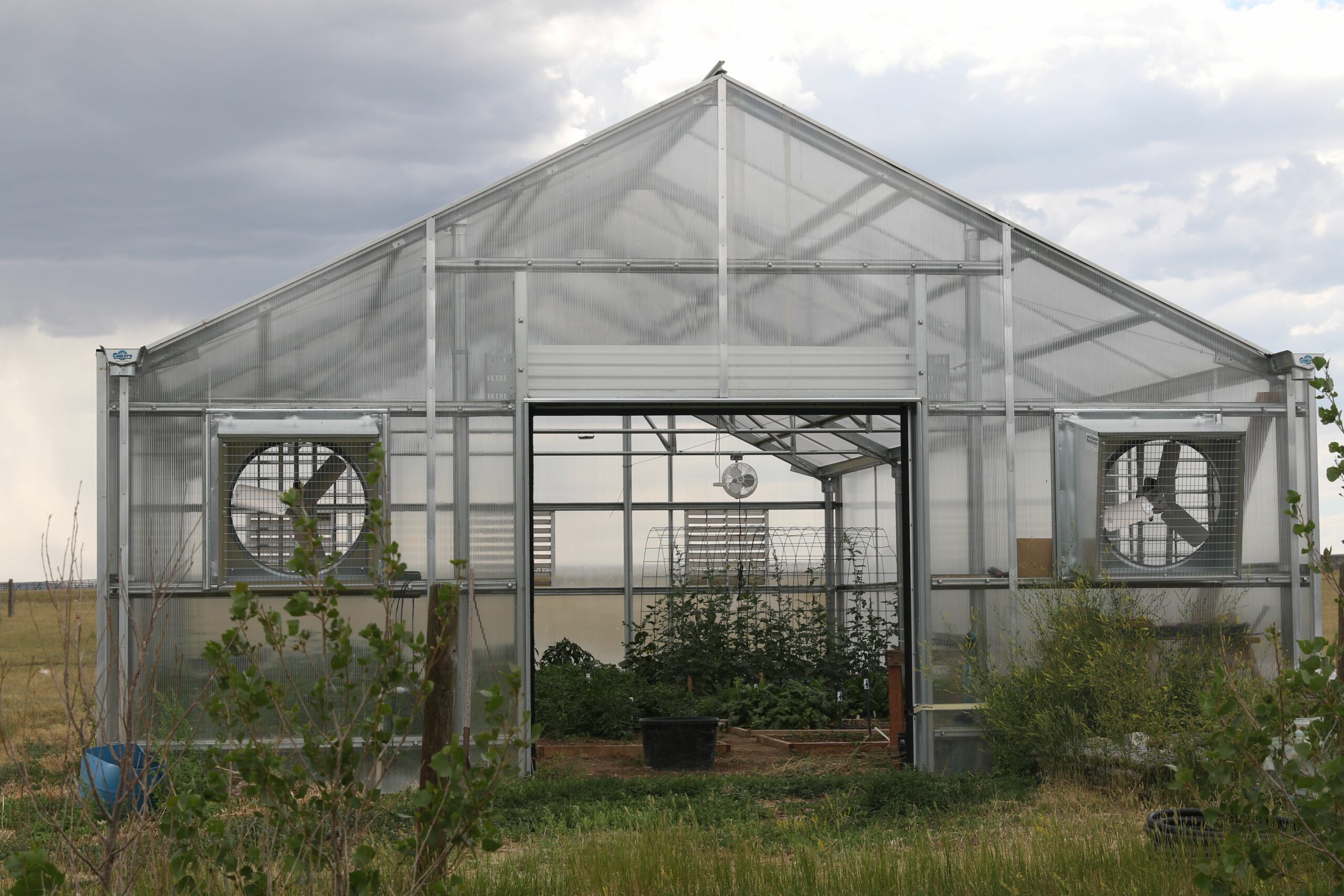
Adding a greenhouse to our homestead was a dream come true. When we first decided it was in our budget, I was ready to just start building. It didn’t take long for us to realize it isn’t that simple.
What we discovered is that when researching greenhouses, there is a flood of information, a lot of different options, and many extra things to consider. And on top of that, there’s also a learning curve to starting to use one (I don’t wanna even TALK about how many plants wilted in the first summer in the greenhouse!).
If adding a greenhouse is on your homesteading dream list, then the questions you will want to consider first include:
- What will your greenhouse be used for?
- How big will you need it?
- Where is the best placement?
- Will it be a fixed structure or portable?
- What materials will be used?
- Will it be heated or unheated?
- Will you use it in the summer? If so, how will you keep it cool?
The whole process can be overwhelming and at one point we just stopped looking. Then we came across the Greenhouse Megastore and with the help of their excellent customer service, we were able to get our priorities in order and decide without the overwhelm.
The Greenhouse Megastore is a family-owned store that sells greenhouses and all sorts of different kinds of gardening supplies. They know greenhouses and can give great advice on what works best in every situation.
You can get some of this great advice by listening to my podcast episode How to Use a Greenhouse for Increased Food Security. In this episode of the Old Fashioned on Purpose Podcast, Drew Landis (the Marketing and IT Director for Greenhouse Mega Store) shares his knowledge with me about greenhouses. It was a fantastic episode and I learned tons.
A greenhouse is used to create a controlled environment for growing all kinds of different plants (and it’s also great for simply extending your garden season). Once you have chosen your greenhouse size and type, the most important details you will need to figure out in order to really thrive with growing in a greenhouse: You will need to know how to heat it in the winter and cool it in the summer.
Need tips on heating your greenhouse? Check out my post here —> How to Heat Your Greenhouse In The Winter
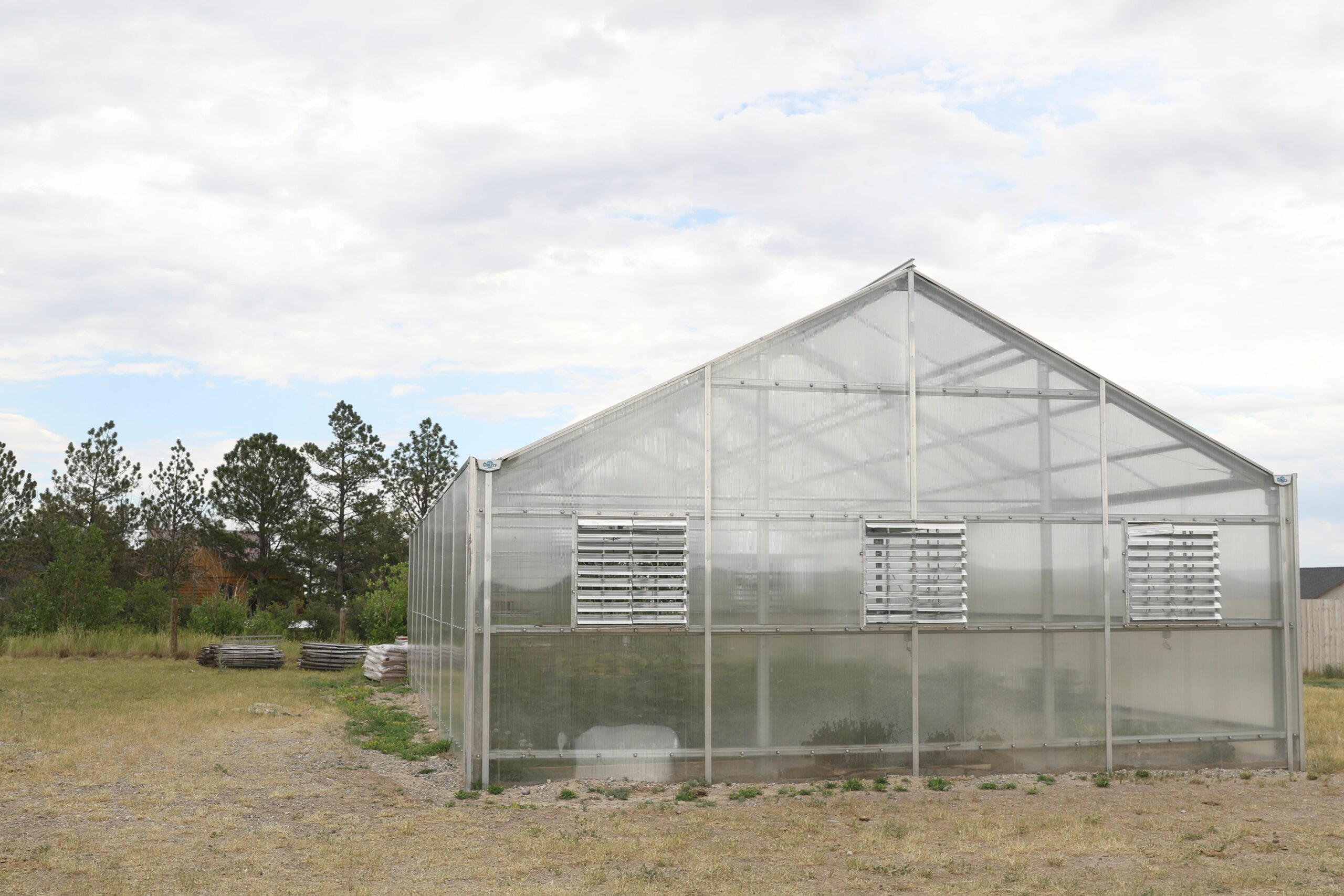
Why You Need to Keep Your Greenhouse Cool
When your greenhouse gets too hot, there are a few things that can happen: your plants can dry out, you can create an ideal habitat for pests, it can cause your plants to wilt, and it can make your plants more susceptible to disease. These are the reasons why you should monitor the temperature in your greenhouse.
During hot summer months, it is important to keep your greenhouse at an around the ideal temperature, which is at approximately 80-85 degrees Fahrenheit. There are different ways you can keep your greenhouse cool. You don’t have to do all of them, especially at first. You might have to start with one or two options and see how it goes for a summer season and then decide if you need to add even more cooling methods for the future.
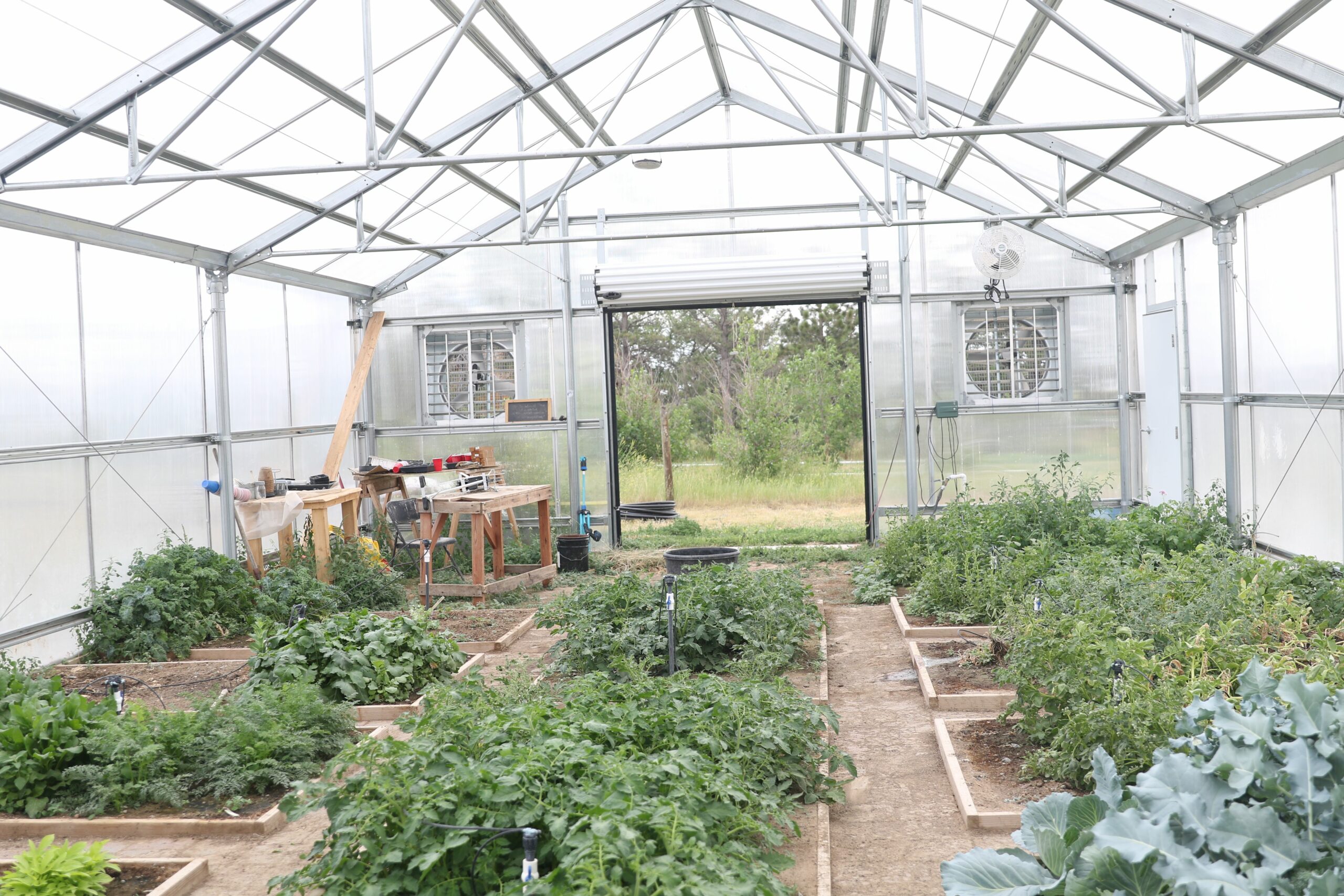
Ways to Cool Your Greenhouse in the Summer
1. Cool Your Greenhouse with Good Ventilation
Natural ventilation is when you use openings and wind to circulate the air through your greenhouse. How you ventilate your greenhouse will depend on what type of greenhouse you have. If you have a portable one with plastic sheeting, you can just role up the sides when you know it will be exceptionally warm. A fixed greenhouse with walls will usually have vents, and these are normally found on the sides and sometimes on the roof.
We use a few different natural ventilation options on our greenhouse. We have a large garage-type door that we keep open during the day in the summer as well as some ventilation fans on each side of the door and also on the opposite side so that the wind goes right through the greenhouse and helps keep the air circulating quite nicely.
Note: When you are using natural ventilation, the interior of the greenhouse will only cool to the air temperature outside.
2. Use Evaporative Cooling
This is when water from different surfaces in the greenhouse is evaporated and used to cool hot air. In a greenhouse an evaporative system can drop the temperature 10 – 20 degrees below the outside temperature. In a greenhouse this can be done by using a fan and pad system, it works best in less humid climates but can be used with success other places.
To learn more about evaporative cooling systems and how they work you can read Greenhouse Floriculture: Fan and Pad Evaporative Cooling Systems.
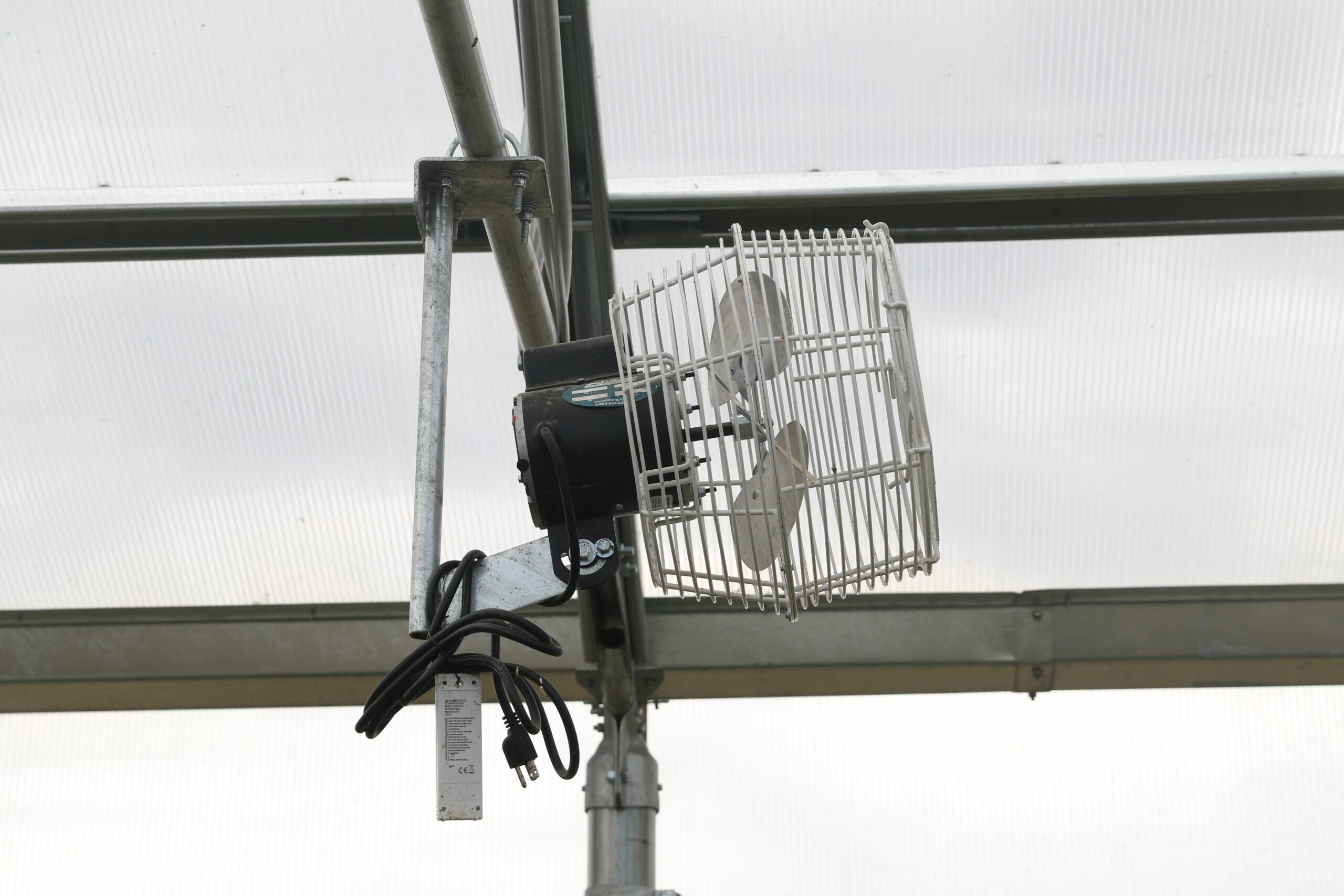
3.Cool Your Greenhouse with Fans
Fans are another way of circulating air through your greenhouse, they can help lower the temperature in your greenhouse by a few degrees. They circulate the already existing air so your greenhouse will not get much cooler than the current air temperature. Fans work well with other cooling systems to help move the air around.
We have a few fans in our greenhouse as well as the other ventilation options I mentioned above in #1.
4. Use a Misting System
A misting system is a network of lines that are usually run along the ceiling of a greenhouse. These lines have small nozzles where pressurized water is forced out. The mist that is created evaporates cooling the air in your greenhouse.
5. Shade Cloth Can be Used
Shade cloth is a fabric that is used to block different amounts of sunlight. It is installed above the plants in a greenhouse to create a barrier. They come in different thickness levels and sizes so they can be used in different greenhouse environments.
If you live in a very sunny climate, you might find these really helpful. Wyoming summers gives us enough clouds that I haven’t found this necessary yet.
6. Use Tree Cover to Shade Your Greenhouse
When you are deciding what area is best for your greenhouse, you may want to think about the average temperature in your area. If you think that you will need to provide a barrier during those peak months, you may want to consider using trees on your property as a natural barrier. You will want them close enough to the greenhouse to provide natural shade but far enough away so they can’t cause any damage.
Wyoming is sorely lacking in trees, so I don’t use tree shade for my greenhouse right now (but that sounds pretty nice!).
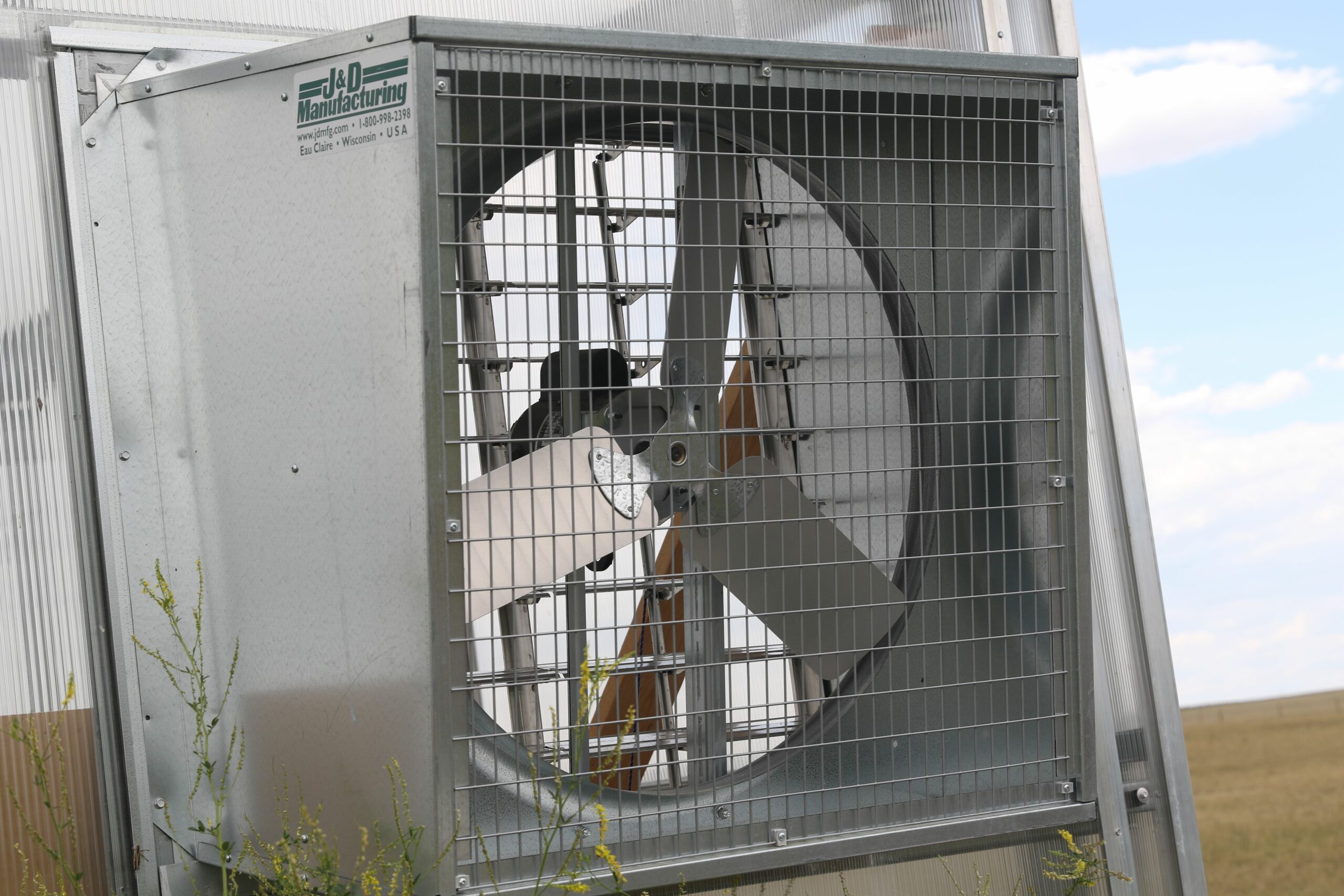
7. Wind to Cool Your Greenhouse
Natural wind gusts can help cool the temperature inside your greenhouse. This is kind of like when the wind hits the side of your house it causes that side to be the “cooler side of the house”, same concept except with your greenhouse. Before you build your greenhouse check to see if there is an area that will align with natural wind patterns.
Note: Be careful with natural wind, this can also be a hazard if your area is prone to strong winds. Be sure to find a greenhouse that is rated for the wind gusts in your area.
We chose a type of greenhouse that can withstand Wyoming winds (one of the Gable series models from Greenhouse Megastore) and we use our Wyoming winds to our advantage with our greenhouse ventilation setup.
8. Use Your Plants to Help Cool Your Greenhouse
Plants are like a natural evaporative system, they absorb water through their roots, use what they need to grow, and then the rest goes through something called transpiration. Transpiration is when excess water is evaporated. Planning and planting large leaf plants strategically can help lower the temperature of your greenhouse.
I also use heat-loving plants (like squashes and melons) to provide some shade some of my cooler-weather-loving plants. This helps delay the bolting of my cool weather plants.

9. Water Your Plants Regularly
Watering your plants regularly will keep them healthy and make sure that the heat isn’t stressing them out. As I mentioned before plants absorb the water that they need and then the rest evaporates. Making sure that your plants have the right amount of water will ensure that the transpiration process takes place.
10. Damp Down Your Greenhouse
This is the process of spraying down pathways, empty areas, and other surfaces in your greenhouse so that the water can evaporate and cool the air. This process is like misting and is all about keeping your plants cool. Damping down creates a humid environment where your plants will be able to withstand the heat.
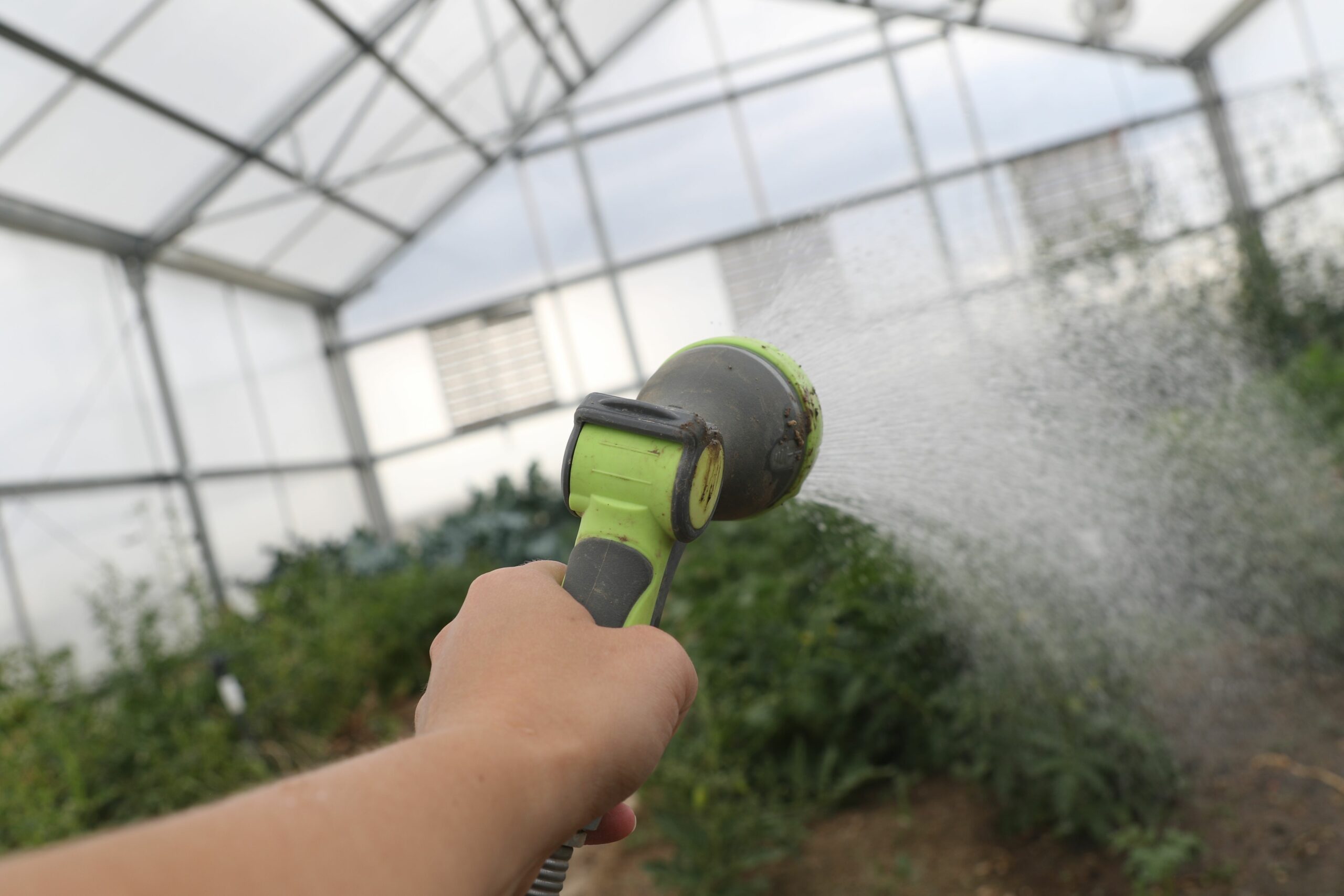
Are You Ready to Keep Your Greenhouse Cool?
Monitoring your greenhouse temperatures will ensure that you have healthy, productive plants throughout the heat of the summer. These different ways of cooling your greenhouse will help prevent plant stress, pests from moving in and diseases from spreading.
Adding a greenhouse has helped us extend our growing season and increase our food security. It has been another step in our journey to more self-sustainable and free from systems holding us back.
Need tips on heating your greenhouse? Check out my post here —> How to Heat Your Greenhouse In The Winter
More About Growing Your Own Food:
- Reasons to Plant a Victory Garden
- How To Plan Out Your Fall Garden
- How to Manage Your Garden Harvest (Without Losing Your Mind)
- Why You Should Grow Heirloom Seeds
- Vegetables that Grow in the Shade
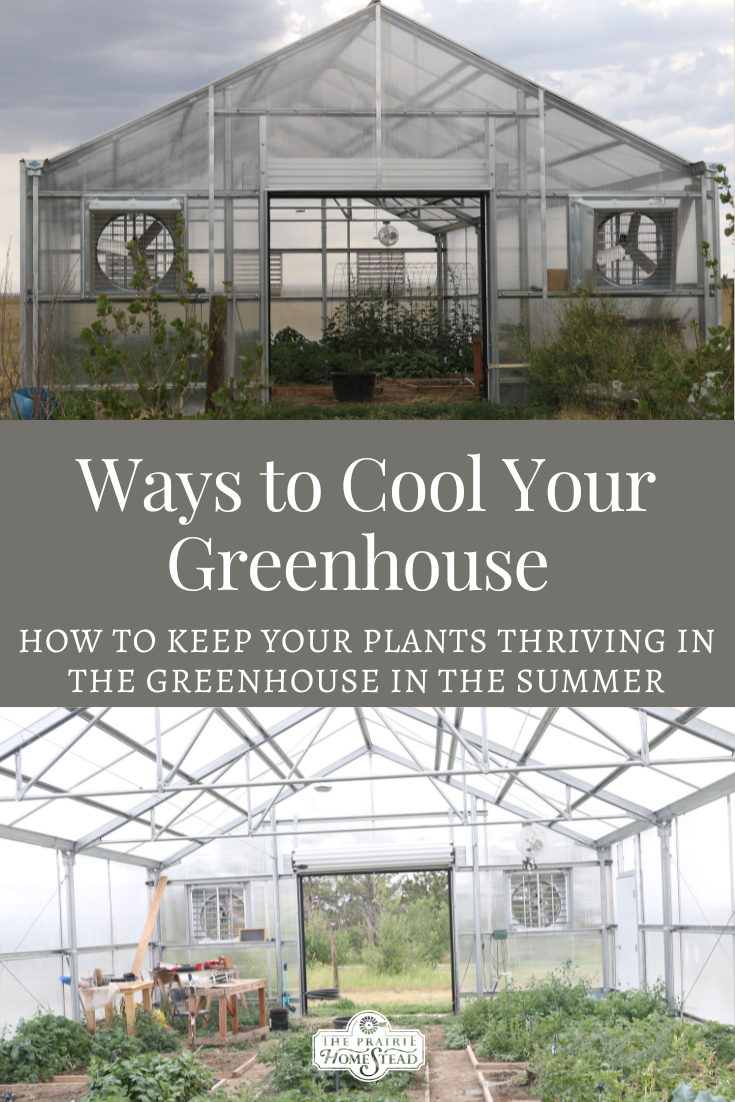
No comments:
Post a Comment